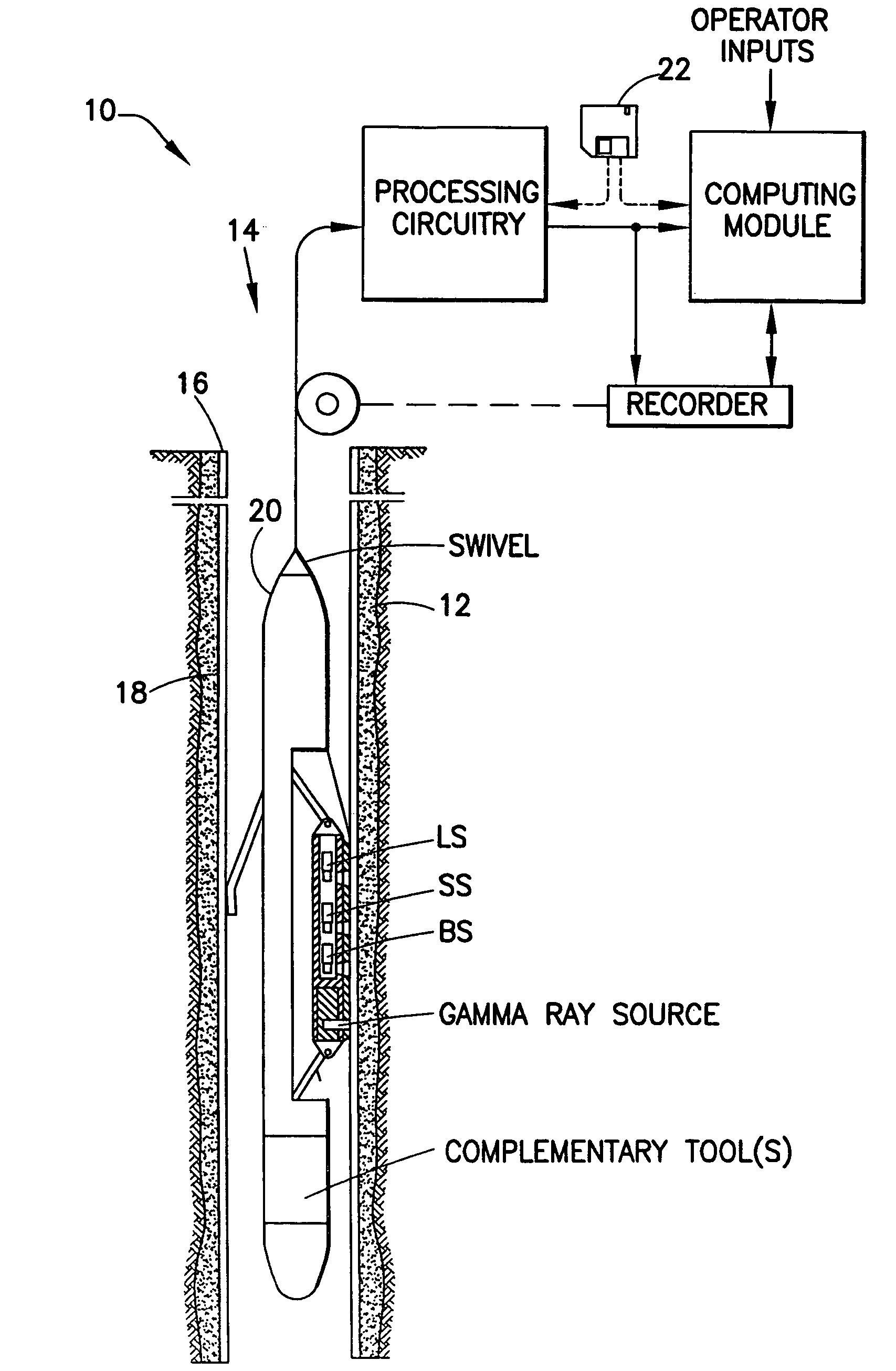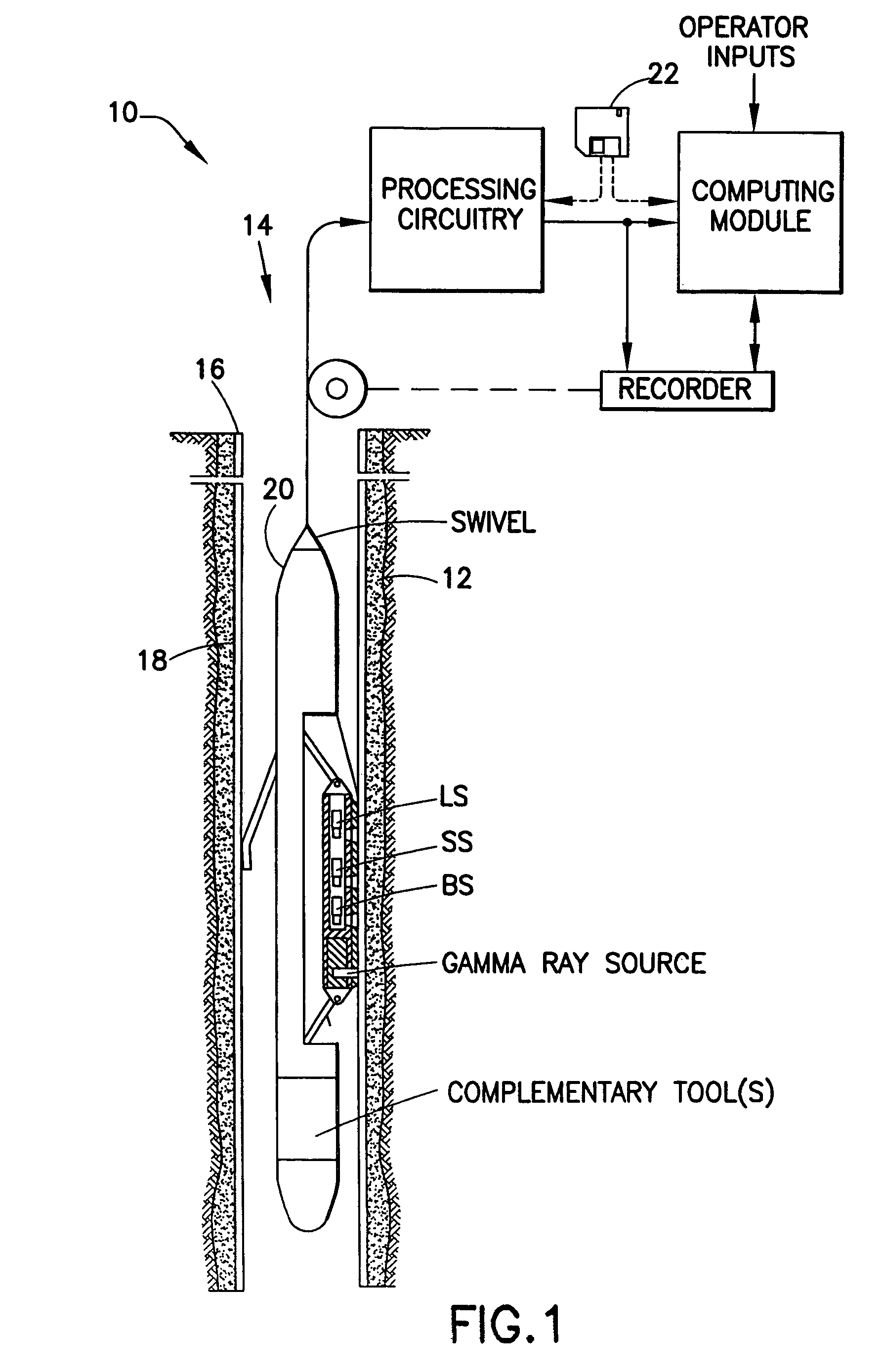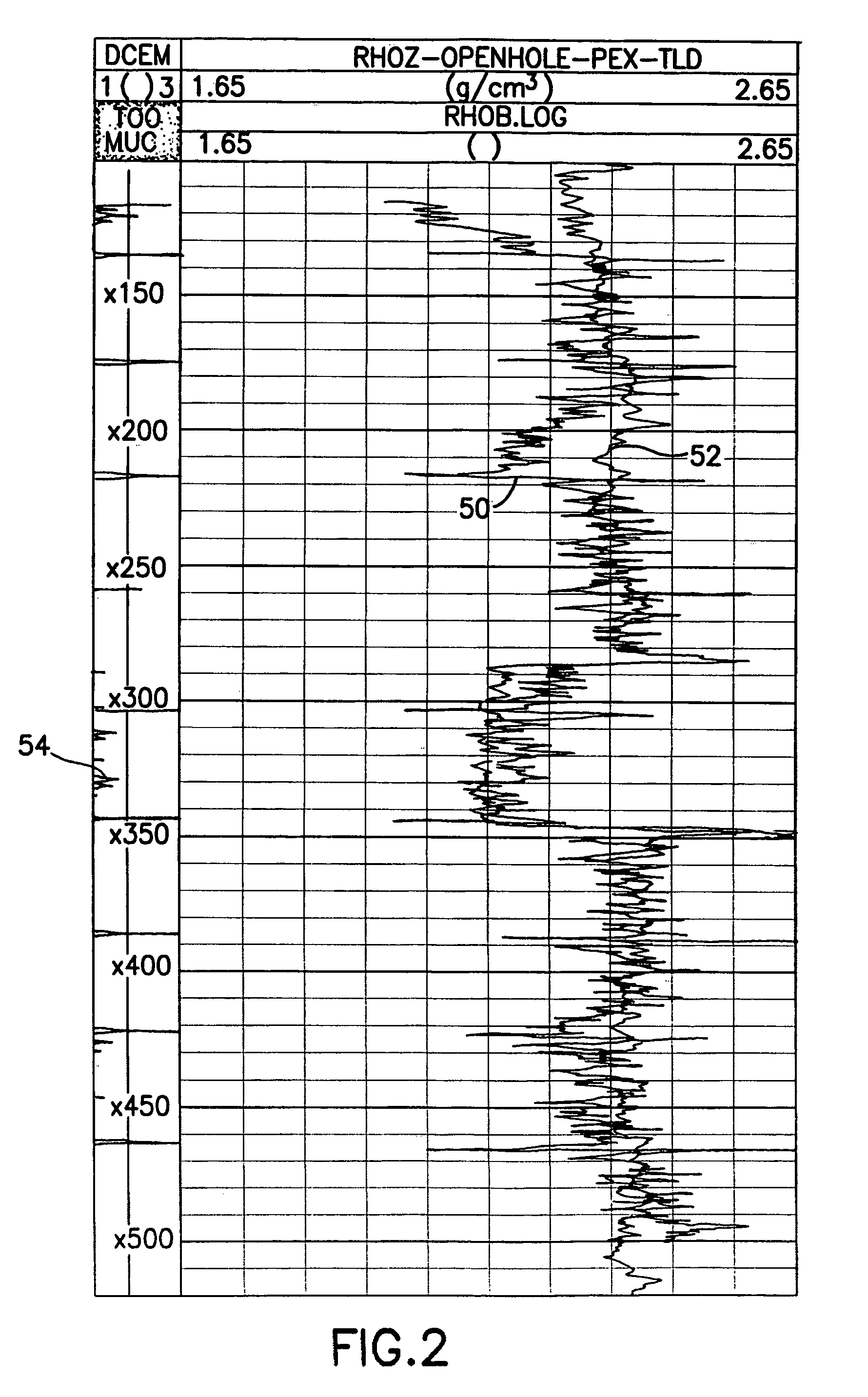Measuring formation density through casing
a technology of density measurement and casing, which is applied in the direction of seismology for waterlogging, using reradiation, instruments, etc., can solve the problems of insufficient account for the many types of differing conditions encountered, the technique has not become widely used, and the depth of investigation is relatively shallow
- Summary
- Abstract
- Description
- Claims
- Application Information
AI Technical Summary
Benefits of technology
Problems solved by technology
Method used
Image
Examples
Embodiment Construction
[0014]An example wireline data acquisition and processing system 10 is shown deployed within a subsurface formation 12. A borehole 14 has been drilled within the subsurface formation 12, casing 16 has been placed within the borehole, and cement 18 has been forced into the annulus between the borehole and the casing. Logging tools 20 are suspended in the borehole 14 on a cable, the deployed length of which substantially determines the depth of the logging tools within the subsurface formation 12. A swivel is provided to allow the logging tools 20 to rotate with respect to the cable, as discussed in more detail below. The cable length is controlled by conventional means at the surface (not shown). Conventional means are used to monitor the depth of tools 20 within the formation 12 and to process, compute, and record the measurements made by sensors within the tool. An article of manufacture, such as floppy disk 22, or another type of optical, magnetic, or electronic media may be used ...
PUM
 Login to View More
Login to View More Abstract
Description
Claims
Application Information
 Login to View More
Login to View More - R&D
- Intellectual Property
- Life Sciences
- Materials
- Tech Scout
- Unparalleled Data Quality
- Higher Quality Content
- 60% Fewer Hallucinations
Browse by: Latest US Patents, China's latest patents, Technical Efficacy Thesaurus, Application Domain, Technology Topic, Popular Technical Reports.
© 2025 PatSnap. All rights reserved.Legal|Privacy policy|Modern Slavery Act Transparency Statement|Sitemap|About US| Contact US: help@patsnap.com



